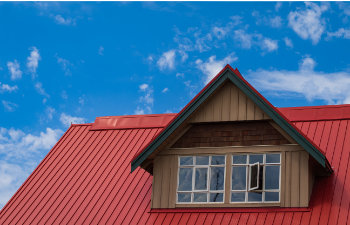
So soon after the recent California wildfires, homeowners are more concerned than ever about the safety of their properties. One of the key considerations in wildfire prevention is the choice of roofing material. Among the various options available, metal roofing has emerged as a popular and effective choice for enhancing fire safety. But can metal roofing truly save your home from wildfires? Let’s delve into the details.
Understanding Fire Ratings
Before exploring the benefits of metal roofing, it’s essential to understand the fire ratings of roofing materials. The Underwriters Laboratories (UL) classify roofing materials based on their fire resistance, marked as Class A, B or C. Class A materials are the most fire-resistant, while Class C offers the least protection. Metal roofing often falls under Class A, meaning it can effectively withstand exposure to flames and prevent ignition.
Benefits of Metal Roofing in Wildfire-Prone Areas
- Non-combustible Material: One of the most significant advantages of metal roofing is that it is non-combustible. Unlike traditional roofing materials like wood or asphalt shingles, metal does not ignite or contribute to the spread of fire, making it a safer option for homes situated in wildfire zones.
- Heat Reflectivity: Metal roofs can reflect radiant heat, reducing the risk of ignition from external flames. This reflective property means that during a wildfire, the roof stays cooler than materials that absorb heat, further protecting the structure of your home.
- Durability and Longevity: Metal roofing is known for its durability and lifespan, often lasting 50 years or more with proper maintenance. This longevity means fewer replacements and repairs, which is beneficial in areas prone to extreme weather conditions, including wildfires.
- Low Maintenance: Metal roofs require minimal maintenance compared to other roofing materials. This is particularly advantageous for homeowners who may not be able to perform regular upkeep due to challenging living conditions in wildfire-prone areas.
- Resistance to Embers: Wildfires can generate highly flammable embers that are carried over long distances by wind. Metal roofing is less likely to ignite from these flying embers compared to more combustible materials, providing an added layer of protection.
Additional Protective Measures
While metal roofing significantly reduces fire risk, it is important to understand that no roofing material can completely guarantee fire safety. Here are some additional measures to strengthen your home’s defense against wildfires:
- Gutters and Vents: Ensure that gutters are cleared of debris and that vents have spark arresters to prevent embers from entering your home.
- Home Maintenance: Regularly inspect your home for gaps or openings where embers could enter, and maintain fire-resistant materials for decks and fences.
Protect Your Investment with Metal Roofing Systems
While metal roofing may not provide an absolute guarantee against wildfires, it certainly offers a robust defense due to its non-combustible nature, durability and resistance to heat and embers. When combined with other wildfire prevention strategies, metal roofing can play a vital role in safeguarding your home and providing peace of mind in areas at risk of wildfires. If you are considering a roofing upgrade, opting for metal roofing might just be one of the best decisions you can make for your property’s safety.
Posted on behalf of